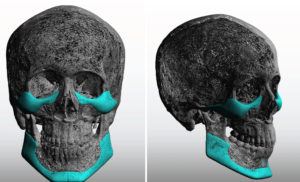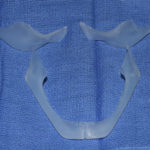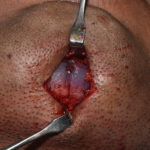Background: Well defined and angular facial features are desired by many men. Some men have it naturally due to their thinner faces and good bone structure. Others achieve it by photographic manipulation. Historic surgical efforts to create it have relied on traditional chin and cheek implants and buccal lipectomies, which help some, but often fall substantially short of the desired facial reshaping outcome.
The more effective and contemporary approach to facial masculinization almost always involves custom implants. Augmenting the length of the cheek (which means the zygomatic arch) as well as expanding all the external circumferential contours of the jawline is what it takes to create improved definition. ‘Spot’ augmentation of the cheek and jawline corners by traditional implants is by comparison understandably creates a more limited and unconnected effect.
Unike custom facial implants which can cover broad surface areas of the bones, facial defatting is much more limited. The goal with defatting is to thin out the face between the cheek and jawline, to create a concave profile between the enhanced skeletal convexities. Traditional defatting means buccal lipectomies which only have a limited defatting effect restricted to right under the cheekbone. This is why additional small cannula fat removal of the surrounding aubcutaneous facial tissues is a helpful addition. How effective such defatting efforts are depends on the natural tissue thicknesses one has.
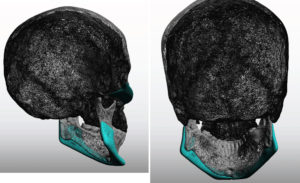
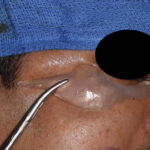
Facial masculinization is a combination of improving skeletal convexities and bony angles. Custom implants provide the mid- and lower face skeletal enhancements. Defatting techniques, though limited, have a complementary effect.
Case Highlights:
1) Masculinizing the male face typically consists of jawline and cheek augmentation combined with facial defatting.
2) Custom cheek and jawline implants are the best approach for facial masculinization.
3) How successful implants and defatting are at creating the desired facial definition is highly influenced by the natural thickness of the tissues.
Dr. Barry Eppley
Indianapolis, Indiana



